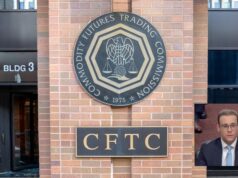Ripple Labs has secured what many in the cryptocurrency world view as a significant, though partial, victory in its prolonged legal battle with the U.S. Securities and Exchange Commission (SEC). The recent federal court ruling has alleviated a substantial regulatory burden for Ripple. It concluded that XRP is not a security. This decision comes after years of legal uncertainty that has weighed heavily on Ripple and the broader crypto market. However, the court’s decision to impose a $125 million fine on Ripple and the potential for an SEC appeal suggest that the case – and the legal standing of XRP – may not be fully settled.
The Court’s Ruling: A Mixed Outcome
The federal court’s ruling is pivotal in the ongoing conflict between Ripple and the SEC, a dispute that began in 2020. The SEC initially accused Ripple of conducting an unregistered securities offering by selling XRP tokens, seeking billions in penalties. The court’s determination that XRP is not a security under U.S. law is a win for Ripple. It contradicts the SEC’s position and provides some much-needed clarity on the token’s regulatory status.
>>> Read more: Ripple XRP Still In Court – SEC Pursues $2 Billion Fine
Despite this favorable outcome, Ripple was still ordered to pay a $125 million fine. The penalty, while significant, is far less than the potential billions the SEC had sought. This fine reflects the court’s finding that Ripple did not fully comply with securities laws in its initial coin offering. However, the extent of the violation was deemed less severe than originally argued by the SEC.
The Potential for an Appeal
The SEC has not yet indicated whether it will appeal the court’s decision, but the possibility remains. Should the SEC choose to appeal, the case could be prolonged, keeping Ripple and XRP under a cloud of uncertainty. An appeal would likely focus on the legal interpretation of what constitutes a security. This a key issue that could have far-reaching implications for the entire cryptocurrency industry.
>>> Read more: SEC Denies $10M Ripple Proposal, Pushes for $102.6M Penalty
Legal experts believe the SEC’s decision to appeal will be influenced by its broader regulatory goals and how the ruling might impact future actions against other tokens. The outcome of an appeal could either strengthen or weaken the precedent set by this case, making it a crucial development to monitor.
Ripple’s Strategic Response
Ripple’s leadership has expressed a cautious optimism in the wake of the ruling. CEO Brad Garlinghouse has framed the decision as a victory for Ripple and the crypto community. He emphasized that the ruling provides clarity allowing the company to continue its operations and growth efforts without the looming threat of a massive financial penalty.
Ripple also indicated plans to expand its On-Demand Liquidity (ODL) services. They will focus on regions outside the U.S., where most of its business operates. This strategic move suggests that Ripple aims to mitigate any potential negative effects from ongoing regulatory challenges within the U.S. market.
Broader Implications for the Crypto Industry
The court’s ruling in the Ripple case is seen as a landmark decision that could influence how other cryptocurrencies are regulated in the U.S. If XRP is not classified as a security, this could provide a framework for other digital assets facing similar scrutiny. However, the case’s unresolved aspects—particularly the potential for an SEC appeal—mean that the legal environment remains uncertain.
Moreover, the ruling highlights the ongoing tension between innovation in the crypto space and the regulatory frameworks designed to oversee financial markets. The Ripple case could set a crucial precedent for future regulatory actions while the SEC still grapples with how to regulate digital assets.
Ripple’s recent court ruling marks significant progress for the company. However, the $125 million fine and the potential SEC appeal indicate the battle isn’t over. Ripple may have won a key round, but the legal and regulatory landscape for XRP and other cryptocurrencies remains unsettled. As the case unfolds, it will likely influence the future of crypto regulation in the U.S. and beyond.
Readers’ frequently asked questions
What does the Ripple ruling mean for other cryptocurrencies?
The Ripple ruling has significant implications for the broader cryptocurrency market, especially regarding how digital assets are classified under U.S. securities laws. The court’s decision that XRP is not a security could set a precedent for other cryptocurrencies facing similar legal challenges from the SEC. This ruling may provide a framework for how digital assets are treated in the U.S., potentially offering more clarity and legal protection for other projects. However, the ruling is specific to XRP. It does not automatically apply to other cryptocurrencies. Each token may have unique characteristics that could lead to different legal outcomes. The ongoing regulatory environment remains uncertain, particularly if the SEC decides to appeal the decision, which could impact future cases.
How might the SEC’s potential appeal affect Ripple and the cryptocurrency market?
If the SEC decides to appeal the ruling, it could prolong the legal battle for Ripple, maintaining uncertainty around the regulatory status of XRP and possibly other cryptocurrencies. An appeal could lead to further legal scrutiny and potentially overturn the favorable aspects of the current ruling. For Ripple, this would mean continued legal expenses and market uncertainty, which could affect its business operations and market valuation. For the broader cryptocurrency market, an appeal could either reaffirm the current ruling, provide more regulatory clarity, or introduce new legal precedents that could complicate the classification of digital assets. The outcome of any appeal would be closely watched, as it could influence the SEC’s approach to regulating other cryptocurrencies.
What are Ripple’s next steps following the ruling?
Following the ruling, Ripple’s immediate focus is on paying the $125 million fine and continuing to operate its business, particularly its On-Demand Liquidity (ODL) services, which are largely conducted outside the United States. Ripple’s leadership has expressed cautious optimism. They view the ruling as a victory that allows them to move forward without the threat of a massive financial penalty hanging over them. Ripple plans to leverage the legal clarity provided by the ruling to expand its services and strengthen its position in the global cryptocurrency market. However, Ripple remains vigilant about the potential for an SEC appeal. They are likely preparing to defend its position if the legal battle continues
What Is In It For You? Action Items You Might Want to Consider
Leverage Market Sentiment Indicators
Given the recent ruling and its impact on XRP’s price, it’s crucial to pay close attention to market sentiment indicators such as social media trends, trading volumes, and sentiment analysis tools. The ruling has spurred positive sentiment. However, any news of an SEC appeal or other regulatory developments could shift the market’s mood quickly. Use sentiment analysis to gauge the broader market’s perception. Make informed decisions on whether to hold, buy, or sell XRP based on these real-time insights.
Explore Arbitrage Opportunities Across Exchanges
There may be discrepancies in XRP prices across different cryptocurrency exchanges due to heightened volatility after the recent ruling. Traders can take advantage of these price differences through arbitrage trading. This strategy involves buying XRP at a lower price on one exchange and selling it at a higher price on another, capitalizing on the spread. However, be mindful of transaction fees and the speed of execution to ensure profitability.
Hedge Against Regulatory Risks
While the ruling has brought some clarity, the possibility of an SEC appeal and future regulatory actions still presents significant risk. Consider using derivative instruments like options or futures to hedge your XRP positions. By purchasing options contracts, for instance, you can protect against potential downside while still participating in any further upside. This strategy can help manage risk and provide a safety net if the market turns against your position due to unforeseen regulatory developments.











[…] >>> Read more: Ripple Ruling: $125M Fine, Uncertain Victory as SEC Mulls Appeal […]
[…] was a partial victory for Ripple, significantly reducing the potential fines the company faced. The court ordered Ripple to pay a $125 million penalty, a fraction of the SEC’s original $2 billion demand. However, the SEC’s recent appeal seeks to […]